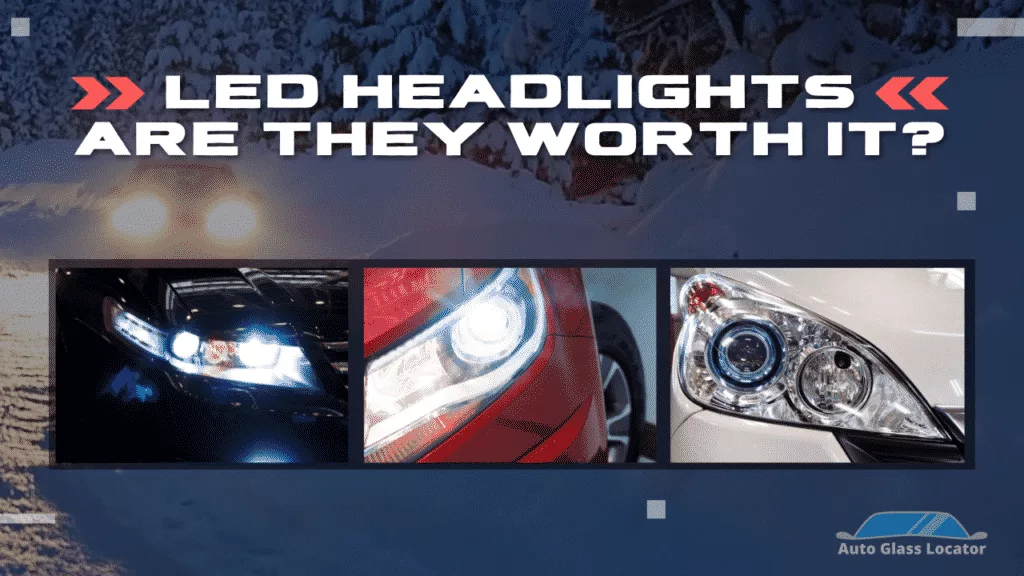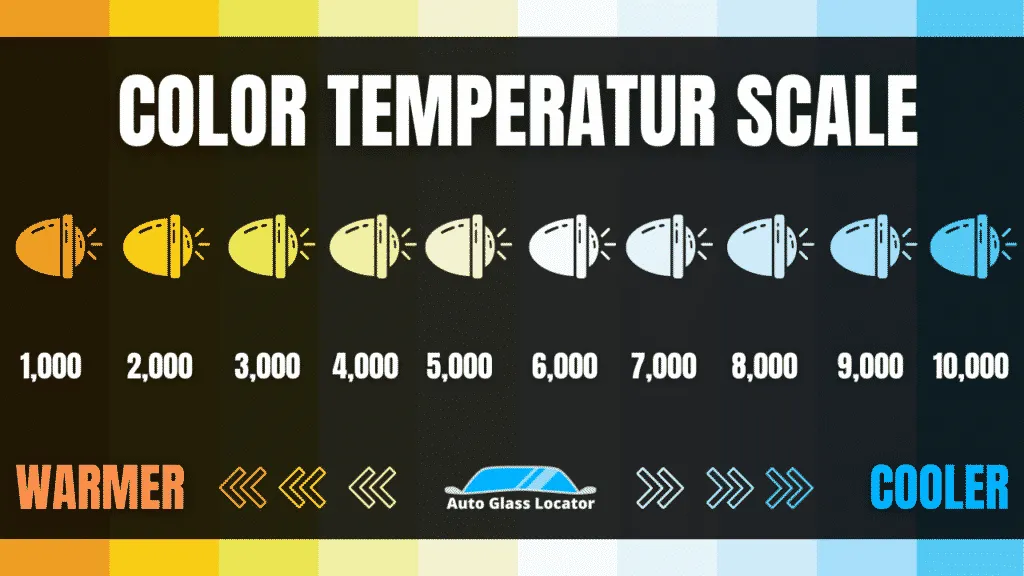
Buying New Headlights?
Let’s face it, driving at night is challenging if the only light on the road is coming from your vehicle. This article will discuss LED headlights and how the quality is different from other lights available. After reading this article, you’ll better understand which type of light is best for your vehicle and the average cost. We’ll cover the four types of lights available, from the older technology such as halogen to the latest laser technology.
The first question most people ask when buying new headlights is whether it’s worth spending more money on LED replacement bulbs than traditional halogen bulbs. The answer is yes! Improved visibility at night is one great reason, among others we’ll discuss shortly. Continue reading to get the pros and cons of each type of headlight on the market today.
Headlight Types and Bulbs
LED
The name LED stands for light-emitting diode, which are small electronic devices that convert electricity into light. First introduced by General Motors in 1996, these bulbs have become very popular because of their high lumen output, long lifespan, and energy efficiency.
PROS
- They are much brighter than halogens and last longer
- They’re longer-lasting and use less energy than other bulb types
- They generate less heat when compared to halogen bulbs
CONS
- LED bulbs cost a little bit more than halogen bulbs
Expected Life – The average lifespan of most stock headlights is around 1,000 hours which is pretty low if you drive a lot. However, the expected life of an LED light is between 10,000 and 30,000 hours.
Average Price – Premium headlights come at a cost. The average price for one LED bulb is around $100.
Halogen Bulbs
Chrysler first introduced Halogen back in 1954 and has been used ever since. These bulbs can burn for long periods without turning the bulb black.
They consist of two parts: A filament and a reflector. Tungsten lights have a filament wire that glows white-hot when exposed to a current. It’s that current that produces the light. The reflector then focuses the light onto the road ahead. For brightness and low production costs, most newer vehicles have halogen headlights.
PROS
- Halogen bulbs are cheaper than LED bulbs.
- They can produce up to 2,500 lumens. So that’s a pretty bright beam of light.
CONS
- They have a yellow color that doesn’t appear as bright as bulbs that emit blue or white.
- Shorter lifespan than LED bulbs
Expected Life – The average life of a traditional headlight bulb is around 1,000 hours which is spot on for halogen lights. So on average, these bulb types will last between 500 and 1,000 hours.
Average Price – The average price for one halogen bulb is around $15, considerably less than LED bulbs.
Xenon HID Bulbs
Xenon bulbs, also known as HID or High-intensity Discharge lights, were first introduced by Ford Motor Company in 2004 and have since been used in luxury cars like the Audi A8, Bentley Continental GT, Jaguar XF, and Volvo S60. These headlights are incredibly bright and made from xenon gas, allowing them to glow at higher temperatures than other bulbs. They also have a more comprehensive range of colors: red, amber, green, blue, and white.
PROS
- These bulbs are incredibly bright, which provides a more significant line of sight.
- They’re capable of producing 6,000 lumens
- They offer a wide variety of colors
- They don’t have filaments which typically burn out in other bulbs
CONS
- They require special installation techniques
- They’re not as efficient as other bulbs
- They have a shorter lifespan than LED lights
- They’re more expensive than halogen lights
Expected Life – Xenon headlights tend to have a longer life than halogen but won’t last as long as LED. The life of an HID bulb can be as long as 10,000 hours.
Average Price – The average price is around $100 per HID bulb, about the same price point as LED bulbs.
Laser Headlights
Laser headlights use different technology to illuminate the road ahead called chemiluminescence. This technology sends a laser beam through a chemical reaction that creates a brilliant white light. High-end sports cars like the Ferrari 458 Italia and Porsche 911 Turbo typically have laser lights.
PROS
- They have a very long lifespan
- They use less energy than other lights
- They create a brighter light than other headlights
CONS
- They don’t have low-beam headlights, only high beams.
- They are costly
- They require a special cooling system
Expected Life – Compared to other lights, laser headlights have a very long lifespan of roughly 50,000 hours.
Average Price – The average cost of laser headlights on your vehicle will be more than $8,000. In some cases, prices can go as high as $10,000.
Headlight Systems
There are three different light systems mainly used in vehicles today: sealed beam, projector, and reflector. Below are details for each type of system.
- Sealed beam – consists of a unit made of glass with the bulb sealed inside the closure. For this reason, the entire headlight assembly will need replacing if the light burns out. Introduced by General Motors in 1912, the sealed beam headlight has remained relatively unchanged ever since.
- Projector-beam headlights – work differently and consist of a single bulb that projects light onto the road ahead. The beam pattern of a projector-style headlight is typically more focused and tends to light up more of the road surface than other lights. In addition, projector-beam headlights are easy for anyone to order and change if they burn out.
- Reflector – consists of a single bulb with a steel bowl and mirrors surrounding it. The mirrors help reflect the beam of light onto the road ahead. Introduced by Ford Motor Company in 1929, reflector headlight systems have been used on most American automobiles ever since.
A Lesson On Color Temperature
Measured in Kelvin (K) units, color temperature determines how warm or cool the light appears. For instance, when you look at the sun, its color temperature is 5500 Kelvin (K). A typical incandescent bulb has a color temperature of 2700 K.
Most people think that higher numbers mean warmer colors, but this isn’t true. Higher numbers mean cooler colors such as white or light blue. So, a 5000 K light would appear much colder than a 3000 K light.
When looking at lights below 5000 K, they will appear to have a yellowish-orange color when turned on. Lights above 5000 K will generate a much whiter light than those with a lower Kelvin temperature. Below is an example of the different Kelvin colors associated with automotive lights.

LED Headlights and Older Vehicles
Older classic vehicles had great headlights but weren’t very bright, so some people have turned to beam conversion kits to upgrade the lights. Also, thanks to aftermarket conversions, it’s now possible to add LED lights to older vehicles. The cost to convert the factory original headlamp to an LED version is usually around $800-$1000.
Top Brands Available
Several different headlight manufacturers produce LED bulbs making it challenging to choose. We’ve added some of our top selections below.
- Auxbeam
- Beamtech
- SEALIGHT
- XenonPro
FAQ
Are LED headlights legal? Yes, all states allow the installation of LED if they meet federal regulations. Some states require special permits, while others don’t. Check your local laws before installing any lighting upgrade.
Can LED headlight bulbs be adjusted? Yes, the bulbs may require an adjustment after installation if the light beam is scattered instead of focused on the road ahead. However, the headlight alignment process is pretty simple, and there are plenty of videos on YouTube showing steps to adjust bulbs on almost every vehicle made.
What are the brightest LED headlights? There aren’t many differences between the brightness of various LED lights. However, two factors affect the amount of light emitted: the size of the emitter and the number of emitters. The larger the emitter and the more emitters on the chip, the brighter the light.
How many amps do LED headlights draw? Typical bulbs use around 1.6 amps, but most LED lights use about .26 amps which is considerably less. In addition, LED bulbs won’t drain the battery quickly if your lights remain on overnight.
What are the best lumens for bright headlights? Most modern cars come equipped with halogen bulbs that produce up to 1,000 lumens. As a result, these lights can be seen easily at night, even during heavy rainstorms. However, upgrading to LED will produce around 2,000 to 4,000 lumens. Check out NADAGuides.com for more details on lumens.
Can LED lights drain the battery? As mentioned above, LED bulbs only use around .26 amps of power, so it would take an extremely long time to drain the battery.
Available Products
Key Takeaways
- All states allow you to install LED headlights as long as they meet Federal Regulations.
- You should check your local laws before installing anything.
- If you’re planning on using LED lights in your vehicle, make sure you get the right type.
- Laser headlights have the most extended lifespan.
- Xenon/HID are the best lights with a lifespan of around 10,000 hours. Plus, they are bright white and have a greater viewing distance than other bulbs.
- Buying bulbs that produce more than 5000 Kelvin (K) will have the most brilliant color of white.
Final Thoughts
Headlight technology has changed dramatically over the years, and LEDs offer a brighter, safer alternative to traditional halogens. If you’re planning on buying new lights, we hope this guide helped you decide what type of automotive lighting is right for your vehicle.







